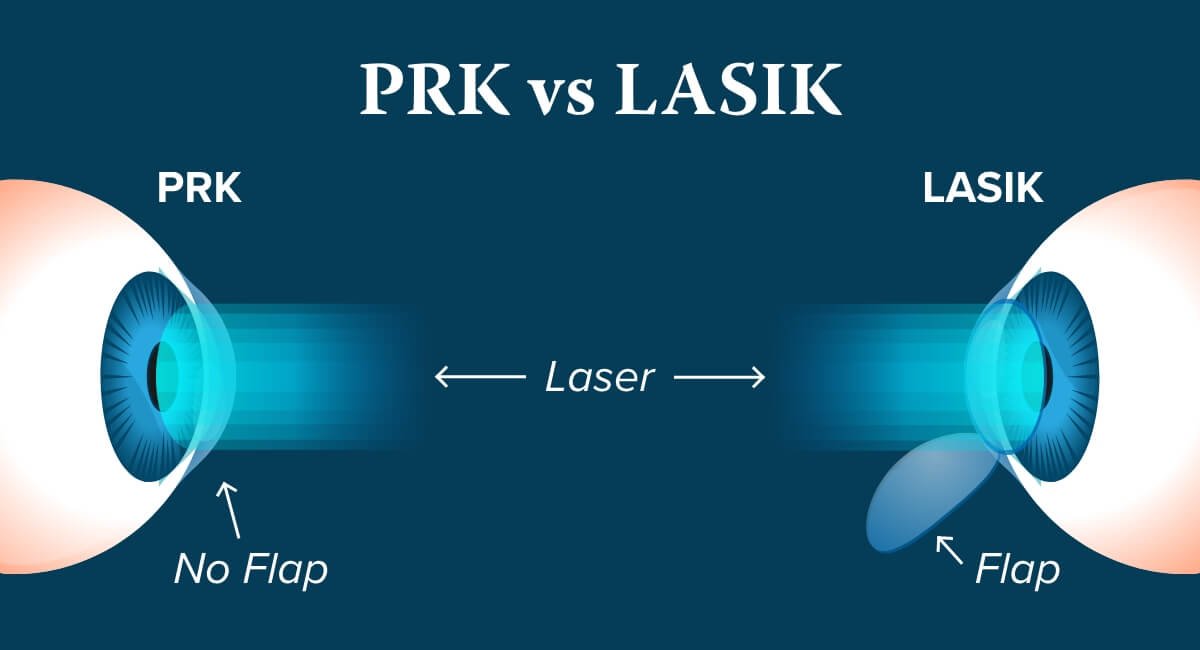LASIK and PRK are two types of refractive eye surgery that are used to correct vision problems such as nearsightedness, farsightedness, and astigmatism. The main difference between the two procedures is the way in which the surgeon accesses the cornea to reshape it.
What is LASIK?
LASIK, or laser-assisted in situ keratomileusis, is a type of refractive eye surgery that is used to correct vision problems such as nearsightedness, farsightedness, and astigmatism. The goal of the surgery is to reshape the cornea, the clear, dome-shaped surface at the front of the eye, in order to improve the way that light is focused on the retina.
During LASIK surgery, the surgeon uses a laser or a blade to create a thin flap in the cornea. The flap is then folded back, allowing the surgeon to remove a small amount of tissue from the inner layer of the cornea using another laser. This reshapes the cornea, improving the way that light is focused on the retina and correcting the patient's vision.
LASIK is generally considered to be a safe and effective surgery, with a high success rate and a low risk of complications. It is typically a quick and painless procedure, and patients often experience an improvement in their vision the day after surgery. However, as with any surgery, there are potential risks and side effects, so it is important to discuss the potential benefits and risks of LASIK with a qualified eye surgeon before deciding if it is right for you.
What is PRK?
PRK, or photorefractive keratectomy, is a type of refractive eye surgery that is used to correct vision problems such as nearsightedness, farsightedness, and astigmatism. The goal of the surgery is to reshape the cornea, the clear, dome-shaped surface at the front of the eye, in order to improve the way that light is focused on the retina.
In PRK surgery, the surgeon does not create a flap in the cornea. Instead, the surface of the cornea is carefully removed using a laser. This allows the surgeon to reshape the cornea and improve the patient's vision.
During PRK surgery, the surgeon uses a laser to carefully remove the surface of the cornea. This allows the surgeon to reshape the cornea and improve the patient's vision. Unlike LASIK surgery, which involves creating a flap in the cornea, PRK does not involve making any incisions in the eye.
PRK is generally considered to be a safe and effective surgery, but it may take longer to heal than LASIK surgery and can be more uncomfortable. It is important to discuss the potential benefits and risks of PRK with a qualified eye surgeon before deciding if it is right for you.
Is LASIK better than PRK?
Both LASIK and PRK are effective at correcting vision problems, but they have some key differences. LASIK is generally considered to be a faster and more comfortable procedure, with patients often able to see an improvement in their vision the day after surgery. PRK may take longer to heal and can be more uncomfortable, but it has a slightly lower risk of complications.
Ultimately, the best choice of procedure will depend on the individual patient and their specific needs. It is important to discuss the potential benefits and risks of both LASIK and PRK with Dr. Johnson at iCare Family Vision before deciding which procedure is right for you.

